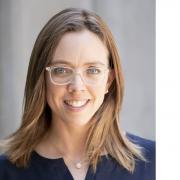|
|
||
|
Associate Professor, Head of the Maurice and Gabriela Goldschleger School of Dental Medicine, Faculty of Health and Medical Sciences, Tel Aviv University. Researcher, Shmunis Family Anthropology Institute, the Dan David Center for Human Evolution and Biohistory Research, Sackler Faculty of Medicine, Tel Aviv University. |
Prof. Rachel Sarig

General Information
CV
|
Research
Facial and Dental Anthropology:
Evolutionary aspects in physiological and pathological processes in human dentition
Many of the current oral diseases and malformations have their roots in our evolutionary history. Knowing the evolutionary processes that led to the current shape and size of our skull and mandible may greatly bear on our understanding of phenomena such as malocclusions (i.e., crowding, rotation, overbite), dental malformations ( i.e. impaction, missing and supernumerary teeth) and oral diseases (caries, attrition, periodontal diseases). Treatment strategy should take into consideration evolutionary reasoning involved in shaping our face and jaws, ignoring them may end, in the long run, in treatments’ failure.
Understanding the evolutionary constrains that have acted through time on our masticatory system may help us planning and establishing better treatment strategies. Long-term evolutionary processes such as decrease in jaws and teeth size, higher prevalence of impacted teeth and the loss of teeth in the arch, are all important factors that should be considered.
The group main interest is the investigation of dental anthropology, dental biomechanics and the masticatory system. The study of the masticatory apparatus is conducted both in prehistoric and modern societies using laboratory models, microCT scans and clinical studies:
Determining the origin of modern humans – development and migration
Evolution of human health, the origin of diseases and medical treatment
Dynamics of human demographics
Osteology, biological anthropology and the study of human culture
Publications
The full list can be found in: google scholar https://scholar.google.com/citations?user=EmiIhDEAAAAJ&hl=en&oi=ao
Selected publications:
- Hershkovitz I, Weber GW, Quam R, Duval M, Grün R, Kinsley L, Ayalon A, Bar-Matthews M, Valladas H, Mercier N, Arsuaga JL, Martinón-Torres M, Bermúdez de Castro JM, Fornai C, Martín-Francés L, Sarig R, May H, Krenn VA, Slon V, Rodríguez L, García R, Lorenzo C, Carretero JM, Frumkin A, Shahack-Gross R, Bar-Yosef Mayer DE, Cui Y, Wu X, Peled N, Groman-Yaroslavski I, Weissbrod L, Yeshurun R, Tsatskin A, Zaidner Y, Weinstein-Evron M. The Earliest Modern Humans outside Africa. Science, 2018 359(6374), 456-459.
- Pokhojaev A, Habashi W, May H, Schulz-Kornas E, Shvalb N, Sarig R. Examination of the interproximal wear mechanism: Facet morphology and surface texture analysis. Journal of Dental Research, 2018 97(13):1445-1451
- Harney É, May H, Shalem D, Rohland N, Mallick S, Lazaridis I, Sarig R, Stewardson K, Nordenfelt S, Patterson N, Hershkovitz I, Reich D. Ancient DNA from Chalcolithic Israel reveals the role of population mixture in cultural transformation. Nature Communications 2018 9(1):3336.
- Schnaider L, Ghosh M, Bychenko D, Grigoriants I, Ya'ari S, Shalev Antsel T, Matalon S, Sarig R, Brosh T, Pilo R, Gazit E, Adler-Abramovich L. Enhanced nanoassembly-incorporated antibacterial composite materials. ACS Applied Materials & Interfaces 2019 11(24):21334-21342.
- Pokhojaev A, Avni H, Sella-Tunis T, Sarig R, May H. Changes in human mandibular shape during the Terminal Pleistocene-Holocene Levant. Scientific Reports, 2019 Jun; 9(1):8799.
- Sarig R, Fornai, C., Pokhojaev, A., May, H., Hans, M., Barzilai, O., Quam, R., Weber, G.W. The dental remains from the Early Upper Paleolithic of Manot Cave, Israel. Journal of Human Evolution, 2019 102648.
- Levartovsky S, Aharonov O, Emodi Perlman A, Winocur E, Sarig R. The effect of tooth wear, age and sex on facial height assessed by soft tissue analysis. Journal of Oral Rehabilitation, 2020 47(3), 346-352.
- Vardimon AD, Shpack N, Wasserstein A, Skyllouriotou M, Strauss M, Geron S, Sadan N, Levartovsky S, Sarig R. Upper lip horizontal line: Characteristics of a dynamic facial line. International Journal of Environmental Research and Public Health. 2020 17(18):6672.
- Beitlitum I, Barzilay V, Rayyan F, Sebaoun A, Sarig R. Post-orthodontic lower incisors recessions: Combined periodontic and orthodontic approach. International Journal of Environmental Research and Public Health. 2020 17(21):8060.
- Nudel I, Pokhojaev A, Hausman BS, Bitterman Y, Shpack N, May H, Sarig R. Age estimation of fragmented human dental remains by secondary dentin virtual analysis. International Journal of Legal Medicine. 2020 Sep;134(5):1853-60.
- Elbahary S, Haj-Yahya S, Khawalid M, Tsesis I, Rosen E, Habashi W, Pokhojaev A, Sarig R. Effects of different irrigation protocols on dentin surfaces as revealed through quantitative 3D surface texture analysis. Scientific Reports, 2020 Dec 16;10(1):22073
- Yossi Zaidner, Laura Centi, Marion Prévost, Norbert Mercier, Christophe Falguères, Gilles Guérin, Hélène Valladas, Maïlys Richard, Asmodée Galy, Christophe Pécheyran, Olivier Tombret, Edwige Pons-Branchu, Naomi Porat, Ruth Shahack-Gross, David E. Friesem, Reuven Yeshurun, Zohar Turgeman-Yaffe, Amos Frumkin, Gadi Herzlinger, Ravid Ekshtain, Maayan Shemer, Oz Varoner, Sarig R*, Hila May*, Israel Hershkovitz*. Middle Pleistocene Homo behavior and culture at 140,000 to 120,000 years ago and interactions with Homo sapiens. Science 2021 372(6549), pp.1429-1433.*equal contribution
- Israel Hershkovitz*, Hila May*, Sarig R *, Ariel Pokhojaev, Dominique Grimaud-Hervé, Emiliano Bruner, Cinzia Fornai, Rolf Quam, Juan Luis Arsuaga, Viktoria A. Krenn, Maria Martinón-Torres, Jose Maria Bermúdez de Castro, Viviane Slon, Lou Albessard-Ball, Amélie Vialet, Tim Schüler, Giorgio Manzi, Antonio Profico, Fabio Di Vincenzo, Gerhard W. Weber, Yossi Zaidner. A Middle Pleistocene Homo from Nesher Ramla, Israel. Science. 2021 372(6549), pp.1424-1428.*equal contribution
- Nudel, I., Pokhojaev, A., Bitterman, Y., Shpack, N., Fiorenza, L., Benazzi, S. and Sarig R. Secondary Dentin Formation Mechanism: The Effect of Attrition. International Journal of Environmental Research and Public Health, 2021 18(19) 9961.
- Habashi, W., Bader-Farraj, A., Shpack, N., Beitlitum, I., May, H., Sarig R. Three-dimensional surface texture analysis of fluoride’s effect on enamel erosionJournal of Clinical Medicine, 2021 10(19):4528.

